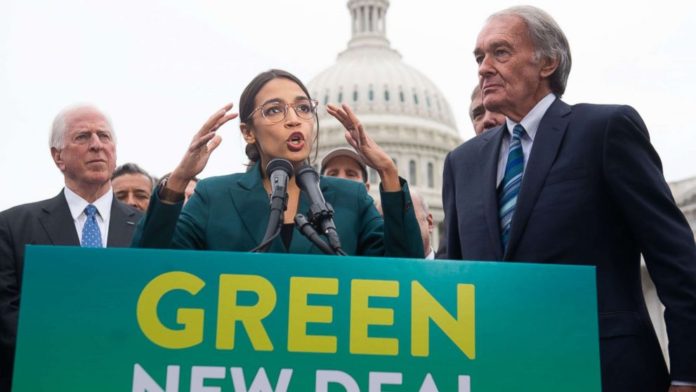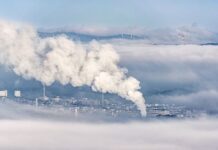Welcome to “Fridays with Scott” segment of the Climate Change program.
So what is this Green New Deal that we’re hearing about? Well first it’s not new. The term Green New Deal first appeared in 2007 when Thomas Friedman, a columnist for the New York Times wrote:
“If you have put a windmill in your yard or some solar panels on your roof, bless your heart. But we will only green the world when we change the very nature of the electricity grid — moving it away from dirty coal or oil to clean, renewables. And that is a huge industrial project — much bigger than anyone has told you. Finally, like the New Deal, if we undertake the green version, it has the potential to create a whole new clean power industry to spur our economy into the 21st century.”
Friedman’s article was then taken up by the Green New Deal Group who wrote their report in 2008 and eventually the United Nations Environment Programme, Green Party and now certain Democrats such congresswoman Alexandria Ocasio-Cortez and Senator Ed Markey are bringing it to mainstream.
If we look at the latest report from the organization Data for Progress, authors Greg Carlock and Emily Mangan, here is their blueprint:
Transform to a Low-Carbon Economy
- 100% clean and renewable electricity by 2035
- Zero net emissions from energy by 2050
- 100% net-zero building energy standards by 2030
- 100% zero emission passenger vehicles by 2030
- 100% fossil-free transportation by 2050
But it doesn’t just stop with clean, renewable energy.
They cover clean air, clean water, forests, wetlands, farming and soil, brownfields and hazardous sites, urban and rural resilience, mass transit, and waste. It’s truly ambitious in scope and urgency.
By the way, this portion of the report, it’s music to my ears. Because it will take big hairy audacious goals such as these to make any dent in climate change.
Critics are quick to point out the feasibility of 100 percent clean, renewable energy by 2035 as being unrealistic aspirational goals. According to the U.S. Energy Information Administration, hydropower, wind and solar makes up almost 18 percent of the U.S. energy supply. At the current pace, clean energy is projected to rise to 31 percent by 2050. So there’s a huge discrepancy. But that’s the point of big hairy audacious goals.
To better appreciate the context of the Green New Deal, we first have to look at the old New Deal. Behind the original New Deal under Franklin D. Roosevelt to rescue America from the Great Depression were John Maynard Keynes’ economic theories. It’s what we refer to as Keynesian theories that shaped fiscal policy or the ability to stimulate the economy through large government spending. By the way, President Roosevelt didn’t agree with many parts of the Keynes’ theories but the New Deal was a prime example of government-led economic recovery. Since then, there’s been a large body of research that discredits the long-term viability and soundness of Keynesian economics. Most economists and policymakers no longer accept Keynes’ theory of underemployment equilibrium. Rather modern day, we rely on monetary policy. This is the role of the Federal Reserve Bank system to set interest rates to speed up or slow down the economy by controlling the money supply and the cost of borrowing. For consumers, we see this in our credit cards, mortgages and loans.
So clearly, there’s some really great ideas in the Green New Deal such as aggressively moving to combat climate change but the general resistance is in the approach. We are in the longest expansionary time period in history and the U.S. unemployment rate dropped to 3.7 percent, the lowest in nearly 50 years. Even if a recession is around the corner, the push for massive job boost via Keynesian approach may not make a lot of sense.
Let me go back to Thomas Friedman’s comments about how a whole new clean power industry can spur our economy into the 21st century. This is my take and what I have been speaking on regarding the Fourth Industrial Revolution. If you look at the most valuable companies in the world, they are Alphabet (Google), Microsoft, Amazon, and Facebook. They are leaders in the digital economy, not physicial. But if you go back to prior industrial revolutions, the most valuable companies were very different.
Just as the 19th century brought forth industrial titans such as John D. Rockefeller, Cornelius Vanderbilt, Andrew Carnegie, Henry Ford, J.P. Morgan, Thomas Edison and Alexander Graham Bell, the Fourth Industrial Revolution will usher in new companies and visionaries. The new industrial titans such as Jeff Bezos and Elon Musk are spearheading space travel, electric vehicle mobility to human life extension.
The oil & gas heavyweights such as Saudi Aramco, PetroChina, and Standard Oil that eventually splintered into BP, ExxonMobil, Chevron, and Marathon will make way to new multi-trillion dollar clean, renewable energy companies. Tesla and SolarCity, for instance, would not have become large-scale, viable green businesses without the help of the American Recovery and Reinvestment Act of 2009 that provided tax incentives, infrastructure investment and R&D funding. Now, overall ARRA had mixed results but there is definitely a role that the government plays in supporting the growth of new green companies.
What I feel that it’s missing from this conversation is the role that you and I have in combating climate change. Generally speaking, there are hugely important roles for policies as well as carbon tax or cap-and-trade but fundamentally, without addressing the demand side, it’s artificial and not sustainable. If in fact climate change is important to us, we should be willingness to pay for clean energy. What better way to harness and cement the demand side then to bring the crowd of the world to create a clean energy market and then in turn use the crowdfund to create clean energy production.
There’s a lot of talk within NGOs, governments and non-profits. But very few, if any, are able to turn it into actual production. And that’s where the focus should be.
Stay tuned next Friday as I go deeper into the how.


















